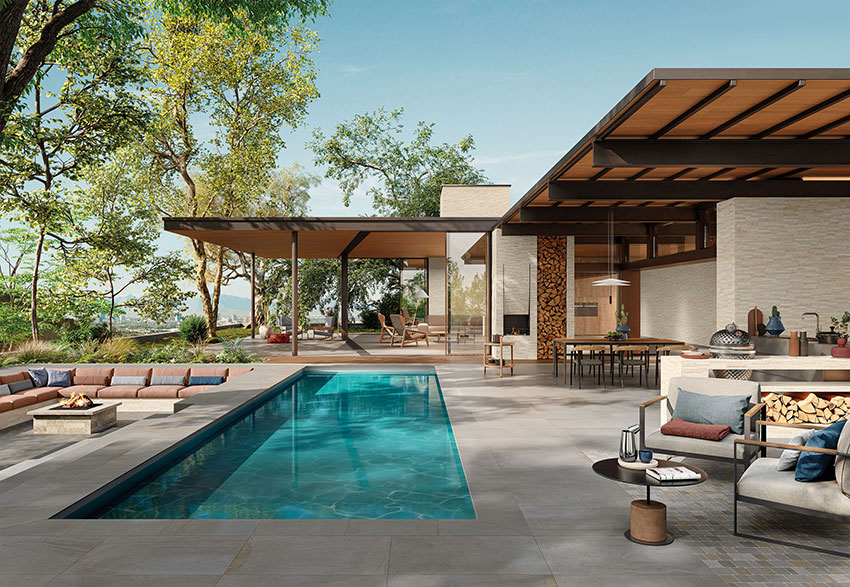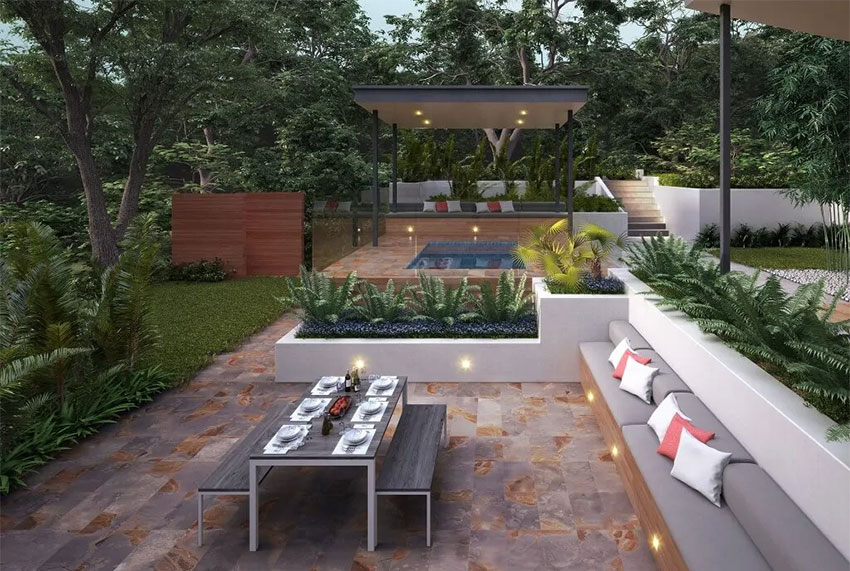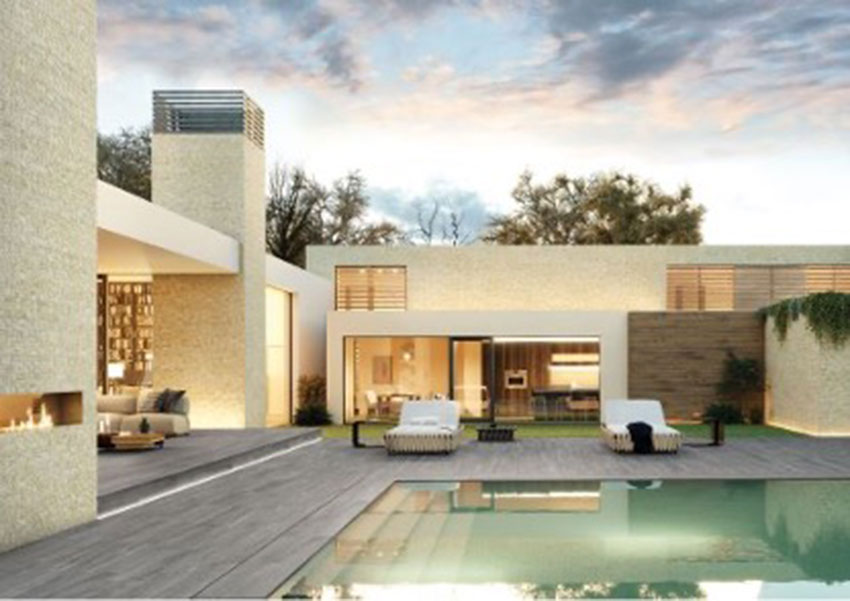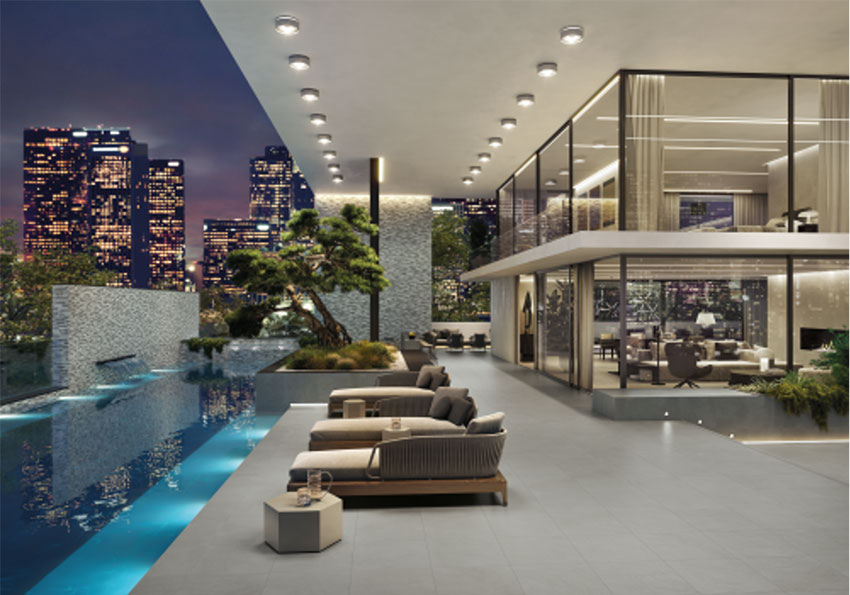Exploring Innovations in Exterior Ceramic Tile Design
 1.25 AIA LU/HSW; 1 IDCEC CEU/HSW; 0.1 ICC CEU; 0.1 IACET CEU*; 1 AIBD P-CE; AAA 1 Structured Learning Hour; This course can be self-reported to the AANB, as per their CE Guidelines; AAPEI 1 Structured Learning Hour; This course can be self-reported to the AIBC, as per their CE Guidelines.; MAA 1 Structured Learning Hour; This course can be self-reported to the NLAA.; This course can be self-reported to the NSAA; NWTAA 1 Structured Learning Hour; OAA 1 Learning Hour; SAA 1 Hour of Core Learning
1.25 AIA LU/HSW; 1 IDCEC CEU/HSW; 0.1 ICC CEU; 0.1 IACET CEU*; 1 AIBD P-CE; AAA 1 Structured Learning Hour; This course can be self-reported to the AANB, as per their CE Guidelines; AAPEI 1 Structured Learning Hour; This course can be self-reported to the AIBC, as per their CE Guidelines.; MAA 1 Structured Learning Hour; This course can be self-reported to the NLAA.; This course can be self-reported to the NSAA; NWTAA 1 Structured Learning Hour; OAA 1 Learning Hour; SAA 1 Hour of Core Learning
Learning Objectives:
- Explain the characteristics that make ceramic tile eco-friendly and provide health and safety for occupants.
- Discuss some of the looks and styles architects can achieve with ceramic tiles in outdoor applications.
- Describe the latest eco-friendly and healthy outdoor applications for gauged porcelain tile pavers (2cm and thicker) and gauged porcelain tiles and tile panels/slabs (as thin as 3.5mm).
- List new codes, standards, and certifications discussed in this article associated with ceramic tile’s contribution to healthy and green building.
This course is part of the Tile Academy
Ceramic tile has a long history in architectural design, but recent technologies and innovations have given it new life in outdoor spaces. As residential and commercial outdoor living spaces evolve from pandemic stopgaps to long-term shifts in design, architects and building owners are turning to materials that are both durable and fashion-forward. This course will look at the characteristics that make ceramic tile particularly suited for outdoor spaces. It will explore the latest design trends for outdoor spaces and touch on key technologies, innovations, and standards that meet those design needs. It will also explain how ceramic tile supports eco-friendly as well as health, safety, and well-being goals for the full range of exterior designs.

Landmark Ceramics Frontier 20; image courtesy of Tile Council of North America
Outdoor ceramic tile enjoys a long history and continues to evolve to meet a wide variety of applications from outdoor kitchens to pool decks.
LAYING THE GROUNDWORK FOR INNOVATION
Ceramic tile has a long and rich history, dating back thousands of years. It can be found in nearly every culture of the world and has lent its versatile style to some of our most important structures—from the Alhambra in Granada, Spain, to the Topkapi Palace in Istanbul. Social, political, and economic forces have influenced ceramic tile over the centuries, but it has never fallen out of favor. And the fact that numerous early tile constructions still exist is a testament to ceramic tile’s durability.

Interceramic Encierro; image courtesy of Tile Council of North America
Throughout history, ceramic tiles have been prized for their durability, beauty, and versatility, and the latest products, which are available in a wide range of colors, sizes, and styles, can be customized to fit the specific needs of a project.
The earliest known examples of ceramic tiles date back to ancient Egypt and Mesopotamia, where they were used for decorative purposes. They were also used in ancient Greece and Rome for both decorative and practical purposes. During the medieval period, ceramic tiles were used extensively in Islamic architecture, particularly in the Middle East and North Africa. Ceramic tiles became increasingly popular in Europe during the Renaissance and Baroque periods, especially in Spain, Italy, and Portugal. With the advent of industrialization in the 19th century, ceramic tile production became more mechanized and efficient, which led to an increase in the popularity of ceramic tiles as a practical and affordable flooring option.
These days, ceramic tiles are used in a wide variety of applications, from decorative accents to functional flooring and wall coverings. They are available in a wide range of colors, sizes, and styles, and can be customized to fit the specific needs of a project. Throughout history, ceramic tiles have been prized for their durability, beauty, and versatility. They have played an important role in the development of architecture and design and continue to be a popular choice for both residential and commercial projects.
Ceramic tiles are typically manufactured using a combination of traditional and modern techniques. The production uses highly automated machinery and processes to achieve high levels of efficiency and consistency. Raw materials are mixed in a large industrial mixer to create a homogenous mixture of clay, feldspar, quartz, and other minerals. The blended materials are formed into tiles using a variety of methods. After forming, the tiles can be decorated and/or enhanced with glazes and coatings, and then dried and eventually fired in a kiln at high temperatures. Once the tiles are fired, they can be sorted and packaged or may go through additional finishing techniques such as cutting to smaller sizes, polishing, and rectifying.
Ceramic tile’s mass production allows for high levels of consistency, speed, and cost-effectiveness, making it a popular choice for large-scale commercial and residential projects. However, handmade or custom-made ceramic tiles are also highly desirable and available to architects (see sidebar).
Ceramic tile is defined as a glazed or unglazed ceramic surface component that is fired at high temperatures. Those high temperatures produce specific characteristics and properties that make them particularly desirable in the built environment. The term “ceramic tile” is a broad reference to a collection of tile subsets. This “ceramic tile family”– as it is commonly known – includes wall tile, mosaic tile, porcelain tile, pressed floor tile, and quarry tile. Though these subsets have their unique qualities that might lend themselves to specific applications, they all share the general benefits for which ceramic tile is best known. And many of the benefits are what make ceramic tile suitable for exterior design.
Health and Hygiene
Architects play a crucial role in designing buildings that promote the health and well-being of occupants. One important aspect of their role is the choice of materials since materials can impact occupant health in a variety of ways.
Ceramic tile has a multitude of benefits when it comes to health, hygiene, and general cleanability. It can be easily cleaned with water and does not require harsh chemical cleaners to do the job. Its surface is naturally inhospitable to the growth of bacteria and microbes, such as mold. Architects needing to specify for an extra measure of resistance can find antimicrobial ceramic tile options that actively suppress or even destroy harmful microorganisms such as mold, fungi, bacteria, and viruses.
Allergens can be an issue with some materials, but ceramic tile contains no allergens and cannot be penetrated by dust, dirt, or pollen that might affect an occupant’s health or comfort. In the same way, while some building materials emit various levels of harmful volatile organic compounds (VOCs) or contain formaldehyde, both of which can impact the health of occupants, ceramic tiles contain no organic compounds. Even when exposed to heat or fire, ceramic tile surfaces do not emit toxic fumes. Ceramic tile is also free of polyvinyl chloride (PVC)─a plastic resin that is sometimes found in vinyl flooring and that contains chemicals of some concern to health experts. Ceramic tile is made from naturally occurring materials, meaning it doesn’t carry the health─and environmental─concerns associated with plastic, in general.
Environmental Sustainability
In addition to affecting the health and well-being of occupants, architects can select materials for sustainability. Ceramic tile has one of the lowest carbon footprints of any available flooring. Based on publicly available environmental product declarations (EPDs) it has the lowest global warming potential and lowest fossil fuel resource depletion. The fact that it is highly durable also makes it a sustainable material – with a lifespan of 75+ years, it has an extremely low life-cycle cost and low environmental impact compared to other flooring materials in North America. Another inherent property of ceramic tile is its thermal mass, which reduces peak heating and cooling, leading to lower energy costs and more comfort for occupants.
Ceramic tiles can be created from pre- and post-consumer recycled materials. They are one of few surfaces that can be salvaged and reused in renovations. Responsibly recovered waste such as dust, powder, unfired scrap, and water can be reincorporated into manufacturing, which minimizes waste and maximizes resources in a “closed loop” approach. Ceramic tile is solid and 100% inert, meaning it won’t leach caustic liquids or decompose—and it meets the Environmental Protection Agency’s (EPA) criteria for “clean-fill” material. At the end of its use, ceramic tile can be ground up and reused as a different material, such as paving or asphalt.
Low-Maintenance and Durability
Ceramic tile is moisture-resistant, stain-resistant, and fade-resistant, making it a prime surface for exterior design. Architects can specify ceramic tile options that withstand freeze-thaw cycles, which makes them a good choice for any climate. Ceramic tile has a high break strength and is scratch-resistant.
Safety
Occupant safety is a primary goal when selecting construction materials. There are increasingly more ceramic tile slip-resistant options available for outdoor applications. These options are ideal for moisture-rich climates or in spaces that are exposed to wet conditions, such as pool decks. Architects can also specify certain textures that add an extra level of slip resistance.
Another safety benefit is fire resistance. Ceramic tile is nonflammable in nature, so it never burns or produces smoke. As noted earlier, it does not give off toxic fumes if exposed to heat and fire. Additionally, if there is a fire in the vicinity, ceramic tile can help reduce flame spread.
Variation Within the Subsets
When specifying ceramic tile for outdoor settings, architects should consider the qualities of each ceramic tile subset. For instance, ceramic wall tile tends to be for indoor applications. Pressed ceramic floor tile can be a good choice for outdoor applications but might depend on factors such as climate and the need for slip resistance. Quarry tile is often used in outdoor design and is especially popular for walkways and patios. Its earth-tone color options blend well visually in outdoor spaces. It also has natural grip with non-slip options available for added safety.
Porcelain tile is composed of fine, dense clay and fired at high temperatures. Its composition and its manufacturing process make it highly durable with an “impervious” water absorption rate of 0.5% or less. Porcelain tile is well-suited for water and outdoor applications. Additionally, porcelain tile comes in formats especially suited for outdoor applications. Porcelain tile panels/slabs are the largest tiles in the ceramic tile family while porcelain tile pavers come in thick formats.
Finally, ceramic mosaic tile—which can be made of regular ceramic, porcelain, or quarry tile—is typically chosen for its small size (fewer than 9 square inches). Its durability is important in outdoor applications, but the key element for choosing ceramic mosaic tile is for creative design involving a combination of shapes, colors, and, sometimes, textures. In general, designers should always check with the manufacturer to make sure the type of ceramic tile they choose is appropriate for the project.
Creativity and Style
t’s probably clear by now that within the ceramic tile family, and among the subsets, there is a wide range of textures, patterns, and finishes that allow designers to create a variety of looks and styles. Architects can create bold and colorful designs or subtle, natural looks—and almost anything in between. And because ceramic tile comes in a variety of shapes and sizes, from small mosaics to large-format tiles, designers can create unique patterns tailored to fit a particular space.

Landmark Ceramics; image courtesy of Tile Council of North America
A growing number of homeowners, businesses, and municipalities are directing their investments towards enhancing outdoor spaces—and the distinctive characteristics of ceramic tile are playing a crucial role in accommodating these evolving demands.
The Rise of Outdoor Spaces
The COVID-19 pandemic has led to a significant increase in the popularity of outdoor spaces. With the risk of transmission of COVID-19 higher indoors, many people have turned to outdoor spaces as a safer option for socializing and entertaining. Outdoor spaces allow for greater air circulation, making it less likely for the virus to spread. To comply with social distancing guidelines, outdoor spaces have become essential for maintaining a safe distance while still being able to gather with others.
In addition, spending time outdoors has been shown to have positive effects on mental health, and with many people feeling the effects of isolation and stress during the pandemic, outdoor spaces have become a popular way to improve mood and well-being. Remote work and schooling have transformed residential living spaces, as well.
As more people turn their homes into flexible environments, outdoor spaces are being seen as an important component—a way to enjoy fresh air and a change of scenery. Homeowners, businesses, and municipalities have been investing in outdoor spaces to make them more comfortable, functional, and aesthetically pleasing. This trend continues—even as the pandemic has largely subsided—because many people have discovered the benefits of spending time outdoors and are likely to continue to prioritize outdoor spaces. Ceramic tile’s unique qualities are helping to meet these changes.

Landmark Ceramic Cosmopolitan Ash; image courtesy of Tile Council of North America
Extruded aluminum trim can be effectively used for smooth transitions between different cladding panel types at inside and outside corners, edges, and other locations.
A VERSATILE MATERIAL FOR OUTDOOR DESIGN
The rise in demand for outdoor spaces has increased the variety of types of spaces. Architects and building owners are reimagining applications such as private patios, fire pit areas, party spaces, pools, and gardens. In particular, rooftop decks and terraces, indoor-to-outdoor transitional spaces, and outdoor kitchens are trending. The expansion of the ceramic tile family’s options—for freeze-thaw and non-slip resistance, for example—plays a major role in supporting and facilitating the reach of these trends. Importantly, the wide range of colors, textures, formats, and styles allows designers and occupants to explore an aesthetic vision, while still providing necessary durability.










